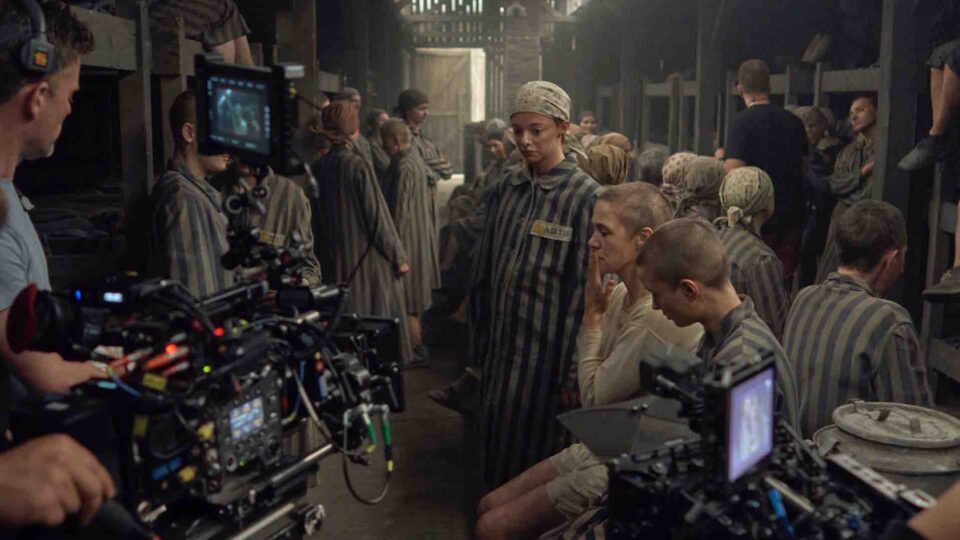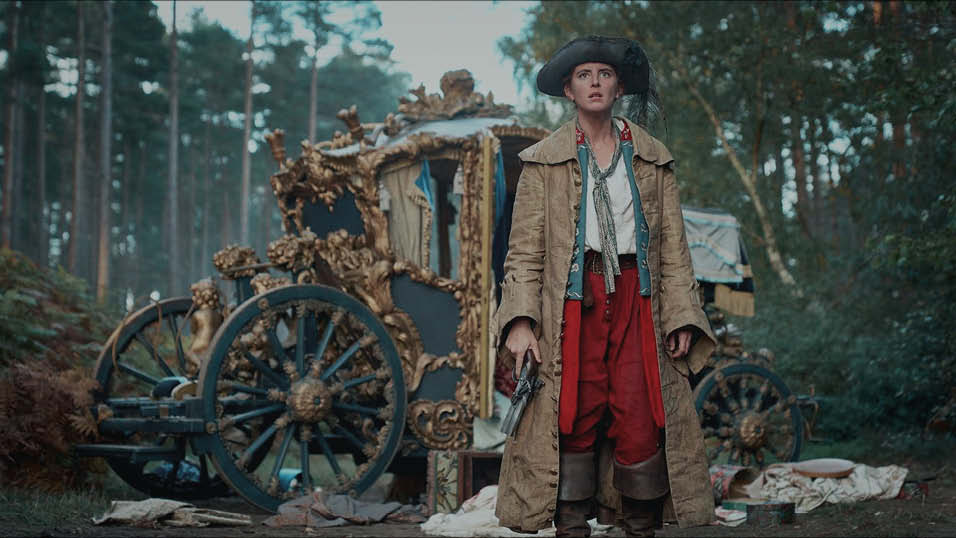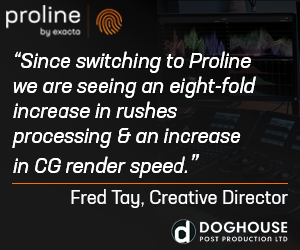Soho has long been the indisputable centre of the post production world in London – whether for films, commercials or television.
But now more than a few companies have started to trickle outwards from that centre to form new pockets of post. Some have gone east and now nuzzle up to the new media start ups that have sprung up around Old Street’s digital roundabout. Because of Soho’s powerful gravitational pull, outfits like Splice and Time Based Arts seemed like brave pioneers for setting up shop in what is, after all, just another bit of London a little bit up the road.
And while those pioneers don’t represent a flood, it’s a trend that has some serious pressure behind it.
Scrubbing up
Soho, like much of central London, and like many of the central and very fashionable parts any big UK city right now, is changing.
Property prices, and commercial rents are rising at an astonishing rate. No grimy backstreet is immune from the unstoppable force of gentrification and for Soho’s grimy back streets, that goes double.
For businesses beyond the post world, the broom has already swept through. The Save Our Soho campaign is a desperate rearguard attempt by a coalition of performers and long term residents to try to keep at least some of the area’s iconic performing arts venues alive. Many of the basement bars, strip clubs and ‘models upstairs’ that made Soho such a grubby but always interesting place have already been swept away under a tidal wave of design led restaurants and duplex apartments. Jeffrey Bernard is dead.
Those same pressures exist on the post world too – because residential flats and restaurants make more money for landlords than businesses do.
Eastern promise
Raised by Wolves, the company formed by Tareq Kubaisi and Jon Hollis, has a Soho address but is one company seriously thinking about a move out east to join the Shoreditch gang. “30 years ago, Soho felt like it was a big video and film industry now it feels like a bunch of restaurants and tourists,” says Hollis. “It doesn’t feel like the industry’s here any more. It’s boutique hotels, restaurants, everything will get paved soon. The Mill’s old building is a Wagamama now.”
Colourist Kubaisi agrees: “Small companies like ours have to make a big commitment to stay here. Out east it’s a bit more interesting. There are great agencies out there too. It’s a different social atmosphere. In the last ten years Soho has become a bit bridge and tunnel. You need a stimulating environment. Maybe I’m just getting old but Soho is becoming less stimulating, a bit generic. It’s a lot tidier but the spark is going.”
The Mill moved last year from its Great Marlborough Street location in Soho after 24 years to Windmill Street in Fitzrovia. London md Darren O’Kelly reckons the move out of Soho has “re-energized The Mill London to a certain extent” due to “being in a part of London that has a relaxed, local community neighbourhood. It’s cool without being hipster. It’s an area that has start-up businesses and not been totally overrun by chains. Our next door neighbor is a guy that makes bespoke leather products, and that’s inspiring. Much like when you sell your first flat or house you think you’re going to miss it, but once you’re in your new pad you can’t believe you didn’t do it sooner. So I’m loving it and I’m pretty sure our staff and clients are loving it too.”
MPC’s senior EP, Jonathan Davies agrees that Soho is undoubtedly changing “Soho is going more residential so a lot of business is being pushed out by landlords. It was nice that it used to be a little bit seedier. It’s becoming a lot more foodie and touristy. It is losing a bit of its character but it’ll be fine.”
Because, he says, the essential creative buzz of Soho still exists. “There’s a creative vibe here as well. Clients not based in Soho like to come in to Soho.” And there’s still that post community feel. “On this street [Wardour Street] there’s Nice Biscuits, Finish and a few others. There’s us this side of Oxford Street and Framestore, The Mill and D Neg the other.”
Soho or bust
But a major pull is simply that for clients “it’s just assumed that you’re here in the middle of town,” says Davies. “We’re an established brand and though there are companies in Shoreditch and a few film vfx houses out west, generally everyone’s in Soho or just across in Noho. It kind of doesn’t make sense to be here in terms of cost but everyone expects you to be here and the workforce expects to work here.”
Though a smaller player than MPC, Coffee and TV also reckons Soho is still essential despite the high rents on its Kingly Street studio. “I don’t think you can afford to be anywhere else,” says md Derek Moore. Because although agencies tend to be spread a little wider than central Soho “by being central you open it up to everyone who’s coming through. As long as you’re near restaurants or sound houses and editing companies, however expensive it is we need to be here.”
And besides, says Moore, it’s not always cost effective to move somewhere cheaper. “If you look at the cost per year of your rent and what you would save by being in Shoreditch, that probably adds up to two or three large-ish jobs. Your opportunities are substantially better by being here rather than there overall. I think moving is shortsighted.”
And there’s also the fear that the big talent might not come with you either. “In Shoreditch or Farringdon, you could be a lot more cost effective , but would you attract the top guys?” says Moore. “Unless they happen to live east already they’re not going to schlep past The Mill, Framestore and Electric Theatre to get further out.”
And for big players, moving anywhere is prohibitive. “Technically we could do it but in terms of shifting everything further away the costs of that would just make it not worthwhile,” says MPC’s Davies. “The infrastructure’s been here so long and relocating that’s not simple.”
I need some space
But there is another big pull away from Soho, and that’s architecture. The Mill’s move was at least partly fuelled by the desire to “embrace a new, more open-space way of working” as O’Kelly puts it. Soho is defined by its close streets and Victorian town houses. And so most commercial property is made up of small rooms linked by stairways. That was fine in a different age, but post houses and their clients are now embracing a more open plan studio approach. MPC’s modern building in Wardour Street allows that but not much of Soho does (hence The Mill’s move across Oxford Street.) “Traditionally you’d have lots and lots of suites but we’re breaking that up into more open plan areas.,” says MPC’s Davies. “The technology and the client needs shape your building. There’s less machine room, you don’t make many tapes now there’s more open plan project areas. Years ago everyone was really obsessed with confidentiality. Any discussion of a job and you’d be in a little room. Clients are more chilled out about coming in and having an informal chat about projects and they’ll see other clients in which they like. It’s more relaxed in that sense.”
And that fuels much of the desire to move east too. “There’s not much price difference out east but it’s the kind of space you can have,” says Raised by Wolves’ Hollis. “Most of the buildings here are Victorian with small floors and tons of stairs. It’s not ideal. I’d rather we were all on one big floor. Out east you’ve got warehouse floors – all the old rag trade stuff.”
But in the end, it may be more contemporary ways of working that could mean more companies choose to stay in Soho. The increasing possibility of having artists working remotely means a Soho base needed be that large, or that expensive. “Lots of artists live all over and they come in when they need to, often at the start when we brief a job, and then they go back and work remotely,” says Coffee & TV’s Moore. “So we can afford to keep the Soho space small.”
“That’s one of the reasons we’re holding off a little bit,” says Kubaisi. Because if remote working really takes off “this place works beautifully.”
P.S. for a look at Soho back in 1956, check out this fabulous footage on the BFI Player
Jon Creamer
Share this story

















